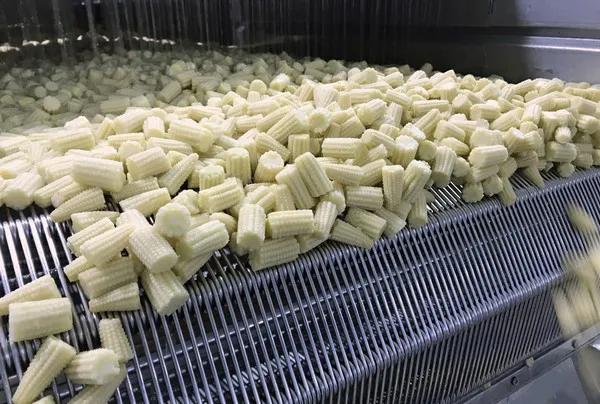The IQF market has witnessed significant growth in recent years due to the increasing demand for convenience foods, rising consumer awareness about food safety and hygiene, and technological advancements in the freezing industry. However, the IQF market also faces several challenges today, including increasing food safety regulations, fluctuations in raw material prices, or the economic uncertainty and raising inflation caused by the ongoing war in Europe.
Rasmus Larsson, CEO of OctoFrost, a Swedish manufacturer of IQF equipment, believes that despite the impact of the COVID-19 pandemic on the IQF market, new opportunities have recently arisen for the industry. “There is a renewed emphasis on food safety and quality that has driven increased interest in automation to minimize the risk of contamination from manual handling of products and maximize efficiency,” he explains.

A competitive edge for IQF processors
The growth of the IQF market has been robust, benefiting both consumers and producers. IQF products offer several advantages to consumers, including reduced food waste, convenience, and longer shelf life. Cecilia Mardones, Area Sales Manager for South America at OctoFrost, highlights that IQF products also maintain their natural properties, such as taste, color, texture, and odor. This advantage can be capitalized upon by IQF processors, who are increasingly investing in new equipment to enhance yields, lower costs, and produce superior quality products.
According to Larsson, the IQF method is notably faster than other traditional methods, resulting in better preservation of quality and texture, in comparison to techniques like coild storage. This advantage combined with increased yields due to minimum food waste, enable processors to establish premium prices.
Keeping up with market needs to propel the IQF industry
According to Larsson, addressing the needs of processors who specialize in difficult products, such as soft or ripe fruit, and keeping up with emerging trends in the food industry, such as vegan meat, is crucial to propel the IQF industry. “Maintaining the texture and flavor of these types of products is challenging but necessary to develop and grow the IQF industry,” he explains.
To drive innovation and guide technological advancements, it is essential to maintain constant contact with IQF processors. Listening to current customers’ needs is a necessary tool to achieve this goal, according to Larsson. “Customer feedback is the most effective and organic way to optimize equipment performance,” he emphasizes. “They know what their products require, and their input has enabled us to make advances such as fan redesigns to meet specific needs,” he adds.
What is next for the industry?
The IQF market has evolved significantly over the past few years, with a focus on convenience, higher quality, efficiency, and food safety. With the rise of the challenges associated with freezing difficult products, such as whole spinach leaves and diced tropical fruits, innovative companies continue to find ways to push the IQF industry forward.
With a focus on achieving high-quality products, the future of IQF freezing appears to lie in the development of more energy-efficient machinery that is specifically designed increase yields, and safeguard food safety while accelerating processing times.
As the popularity of IQF products continues to increase, the potential for growth in the IQF industry remains high, with many innovative developments to look out for. This growth will drive the evolution of the industry, resulting in new and improved ways of processing food and expanding the capabilities of IQF technology.
For more information:
OctoFrost Group
Email: [email protected]
www.octofrost.com










